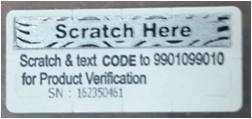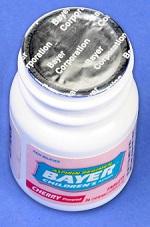Agro Science & Chemicals
Introduction
The Agriculture Industry, which is the backbone of our Indian economy, is facing multiple threats from the growth of fake pesticides. According to the latest study conducted by FICCI, the fake pesticides industry in India was estimated at INR 3,200 crore (USD 525 million) in 2013, which accounted for 25 percent by value and 30 percent by volume of the domestic pesticide industry in 2013. The study indicates that this market is expected to grow at the rate of 20 percent per annum in terms of value, and if not addressed, can reach approximately 40 percent share by value in the pesticides industry by 2019.
Consequences of counterfeit pesticides:
The counterfeit pesticides pose a significant threat to various stakeholders which include:
- Farmers: Risk of life & valuable crop loss:
Various cases of farmers committing suicide due to loss of crops have been reported by the media. Although there are various reasons for the loss of crops, the involvement of fake pesticides cannot be ignored or denied. Spurious pesticides are known to damage the crops resulting in a decreased yield or at times, even destroying a field.
Some examples of this include:
– Punjab: More than half of 5 lakhs hectares’ cotton crop was destroyed
– Jammu and Kashmir: Crop production went down by 50 percent
– Fake pesticides are a serious threat to the Kashmir apple industry which is worth Rs 4,000 crore (US $ 750 million)
- Consumers: Risk of Health
Counterfeit pesticides pose increased risks to consumers through unknown and untested residues. Unlike legal, registered products, spurious pesticides could contain unknown toxic impurities and have not been tested for human health impact. In 2013, a total of 23 children died in Bihar after they consumed contaminated free school lunches containing monocrotophos pesticide. - Government: Risk of reputation, exports and economic damages
Increased cases of spurious pesticides make the public lose their confidence in the government’s ability to regulate the agricultural sector effectively. In 2013-14, India exported 29 million tons of food grains (worth1,578 billion) and 3 million tons of fruit and vegetables worth ` 88 billion. In such a scenario, India’s position as one of the leading food grain exporters in the world is also at stake as there is an increased possibility of rumors or sabotage by other countries or rejection of Indian exports goods items from developed countries. The government loses not just the tax revenue but also its prestigious goodwill and reputation. - Industry: Loss of sales and reputation
Due to the presence of counterfeit pesticides, the farmers lose faith in legitimate products and companies, which results in loss of reputation and customer trust. Also at stake are the Indian crop protection industry, which is estimated at 25,000 crores ($ 4.1 billion) in Financial Year 2014 along with the Food Retail industry. - Environmental risk
There is a high risk of environmental contamination and adverse effects on groundwater, following crops, and biodiversity. Firstly, the production of counterfeit products may subvert environmental regulations leading to the production processes and waste contaminating the land, air, and water. Secondly, the use of Counterfeit products, such as pesticides, may cause severe crop and environmental damage. Thirdly, the destruction of counterfeit products can result in more landfill waste or toxic fumes from incineration.
Types of counterfeit pesticides:
The key forms of counterfeit pesticides are:
- Fake pesticides:
These products are often sold in simple packs (white bottles) with minimal information on the label about their use and no mention of any health or environmental precautions. They contain anything from water or talc to diluted and outdated or obsolete stocks, including banned or restricted materials. Some fakes also provide a degree of biological control, as they sometimes may contain an illegal and untested copy of the proprietary active substance. - Counterfeits of genuine branded products:
These are sophisticated copies of legitimate branded products usually with high-quality labelling and packaging. Most contain a copy of the original active substance; however, its biological efficacy is oftendiminished owing to high-level impurities of manufacturing and process by-products. Such products are often difficult to be distinguished from genuine ones. Mostly, farmers are fooled into buying them unknowingly in absence of proper education and awareness. In various cases, counterfeiters purchase genuine, empty bottles from the farmers on as high as 25 percent of the M.R.P. mentioned on the original bottle. This way, the counterfeiters put substandard ingredients into the bottle and resell it. - Illegal parallel imports:
These are legitimate parallel traded products substituted with illegal generic copies, repackaged, and sold as legitimate products.
Reasons behind increase of counterfeit pesticides
The problem is increasing because of various factors like.
- Difficulty in identification of fake products with legitimate one due to lack of awareness:
In India, the majority of the farmers lack awareness of the usage and identification of pesticides. Many do not ask for specified chemicals or brands and often ignore if specific details are not available on the products. Ironically, even though the food manufacturers and producers are consumer-oriented companies, they do not publically highlight this issue. Many food companies do recognize the challenges but prefer to resolve these quietly and directly with their suppliers. Farmer organisations and Co-ops must play a leading role in increasing awareness about the risks of using counterfeits. - Lack of monitoring and surveillance
As the responsibility of enforcement is divided between the regional and national authorities but the political divisions and sensitivities have led to weak enforcement coordination and action. At national levels, this requires multi-disciplined specialists’ teams with skills in policing and prosecution, chemicals, agriculture, customs, environment, etc. These skills are available, but more often than not are not working together. - Focus on high-profile sectors
National anti-counterfeit activities tend to focus on high-profile sectors where the VAT losses are largest (luxury goods, CDs, clothing, software, pharmaceuticals). Less high-profile sectors like farmers do not get the requisite resources– despite the acute environmental and health threats posed by counterfeit pesticides.
Role of authentication Solutions in fighting this menace.
Counterfeiters today are tech-savvy and can easily produce packaging material similar to or better than that of genuine products. But, if there is a problem, there are solutions. Technology-based solutions could be one of the strategies to counter the problem. Various studies and scholars have attempted to propose technology-based solutions to combat fake agro-inputs products in the supply chain. The proven adoption of these technologies by countries like Tanzania and Uganda can be treated as case studies. These authentication solutions have multiple benefits as they provide.
a) Tamper proof packaging.
b) Product authentication and
c) Tracking and tracing of product
Solutions for Agro science and chemical industry





